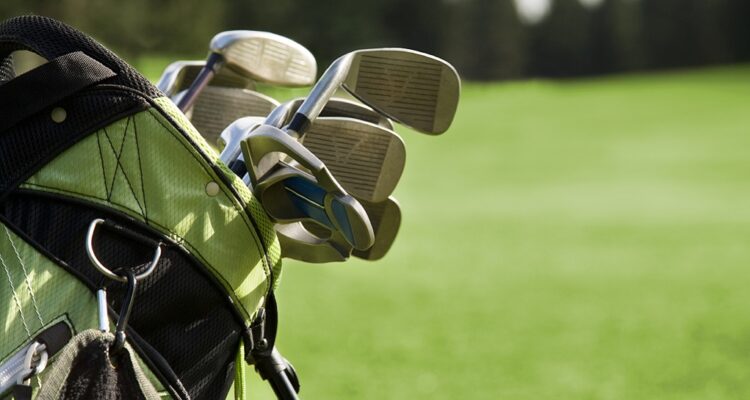Whether you see golf as a long-term hobby or just something you do for fun on rare occasions, everybody wants to improve. However, golf is an especially tricky sport to develop skills with because it is not always easy to know exactly what you did with each swing.
This creates a very obvious problem for people who might want to improve their skills – sometimes, you have no idea why you landed a lucky hole-in-one or why your putt went in completely the wrong direction.
However, like most sports, getting better at golf is about three things: patience, equipment, and information. You need to know more about your swings, use the right gear, and give yourself some time to develop better skills as you learn.
Here are a few tools that make golf a much easier sport to learn and improve at, whether you are a brand-new player or a long-term hobbyist who wants to improve your game even further.
Better Clubs
The most obvious way to bolster your skill at golf is to use the right clubs or to replace the ones you already have with a better set. While there might not be much of a difference between an expensive set of clubs and a very expensive set of clubs to the average player, sticking with cheap or secondhand clubs can become a huge burden.
Like any sport that relies on actual equipment, you are only as good as your gear. If your clubs are not suited to your height or use materials that are easily worn down and broken, you might be playing with equipment that hurts your golf game more than it helps.
For example, it is important to make sure that you are using the proper clubs for your height, and the way that you swing Clubs that are too long or too short can lead to missed shots and poor accuracy. This might also force you to use a standing pose that hurts your back or makes it harder to judge the angle you are hitting the ball.
Good clubs are also more hard-wearing, harder to break during transport, and are usually more reliable overall when actually playing golf. Even the weight and grip of your clubs can make a huge difference, depending on how you stand and swing.
Another huge mistake many new players make is sticking with only one or two clubs at most – usually a regular club and a putter. While this can work, many longer-term players have a whole set since each club handles swings in a different way and allows you to pull off distinct shots.
Getting yourself properly equipped is one of the easiest ways to make a big impact on your golfing abilities. It might seem expensive, but it is actually a lot less of an investment than you might expect, especially since most clubs can last a long time before suffering any kind of damage.
Putting Aids
Putting often seems like one of the easiest parts of golf, but it can actually be surprisingly hard. It takes a lot of skill and practice to putt consistently well, especially when the greens are not perfectly flat and may be made of artificial grass that is inherently different from natural grass fields.
Luckily, there are a lot of putting aids out there that can help. Some of these are meant to train you to keep your putter flat against the ground, while others are supposed to help you aim the short putt taps properly. No matter what they actually do, though, almost every single putting aid can have an impact if it is an area you struggle with.
While putting aids will not help your game all by themselves, they can help you develop into a better putter as a whole, which makes a huge impact on your average score if you constantly struggle to nudge the ball into the hole. Even if your skills are already great, you might occasionally falter at the hole or make a bad putting call, so correcting those mistakes really helps.
Beyond that, however, a lot of the putting aids that are out there also double as practice devices in general. They force you to use the right putting style and technique, getting you used to the right stance and the way you should swing your club. This can stop you from using regular swinging techniques in situations where they really are not suitable.
Launch Monitors
A golf launch monitor, or swing tracker, is a small digital tool meant to help you track your swing data and get a better understanding of what happens with each shot. These are especially popular among professional and amateur golfers alike because they allow you to understand the finer details behind any lucky or unlucky shots that you make.
This can be an excellent tool for new and experienced golfers alike. For beginners, a launch monitor can help them figure out why some shots are harder to control or fly differently than others. This lets them know the difference between how far the ball will fly in a specific situation and which club might be suited to each situation.
For professionals or long-term hobbyists, a launch monitor can help them get a better idea of what went wrong with certain swings or which techniques are causing more issues than they thought. These are finer details that you can’t gather simply by looking at the swing – you need hard data to work with.
The best golf launch monitors use a mixture of different hardware and software systems to provide accurate feedback on each shot, from images of the ball itself to infrared breakdowns of its movements and gyroscopic data about your swing angle.
Some more expensive models can even offer AI-driven evaluation of swings, in-flight tracking technology, and simulation software that can help you practice swings in environments that you do not have easy access to.
All of this means better shots, greater skills, and a stronger understanding of the reasons behind why some shots are so much easier than others.
Swing Speed and Tempo Training Clubs
One of the hardest parts of golf to get right is the swing speed. The speed of your swings directly impacts the distance that your ball will travel, but it is almost impossible to get a consistent swing speed. You can hit the same shot with two different speeds and get two completely different results, which means that it is important to get a handle on your “ideal” swing speed.
Speed training clubs act as stand-ins for regular clubs, monitoring the speed of each swing without requiring you to hit anything – or even be on a real course. This is great for new players who are still trying to get a handle on controlling their swinging speed, but it can also benefit older players who need a tool to help them keep a steady pace.
Since these can be used almost anywhere and require no actual golfing, they are a perfect tool for a quick refresher before you actually start playing a round of golf. They can help you get a better understanding of how speed would impact the ball, making it much easier to eyeball a real shot when the time comes.
It might not sound like much, but getting a firm grasp on the perfect speed of each shot can actually help you save a lot of strokes over a longer round. Even if it only gives you a vague understanding of where the sweet spot is, it can save you time, money, and frustration in the long run.
There are also similar tools meant specifically for getting your swing timing down, too. Timing can be a surprisingly important part of golf, and you want to fall into a tempo that suits you. If you are swinging at random, you might be hitting the ball when you are off-balance or taking a sharp breath that throws your angle off ever so slightly.
Alignment Sticks
Alignment sticks are a very popular training aid that tries to correct the difference between where you think you are aiming and where you are actually aiming. These are able to help prevent as many hooks or slices that send the ball far off-target.
These sticks are placed in specific positions relative to where you are standing and are meant to teach you how to adjust your aim when you are lining up the shot. This not only helps with your aim but also leads to better club alignment with your body, which can dramatically increase your accuracy on the golf course properly.
If you struggle to get your aim straight or you tend to hit the ball off-course, alignment sticks are a great way to train yourself to be a lot more accurate, especially since they are often very inexpensive. They are also highly portable and fairly easy to use, as well as versatile enough to help with training a few different techniques.
For example, good alignment sticks can be used for shaping your shots and understanding chipping just as easily as they can help with bunker shots. In simple terms, they can help with a huge range of shot types and bolster your accuracy in every single one.
Most alignment sticks are fairly cheap and easy to find, making them an essential addition to any golfer’s practice routine. They are not hard to find and do not cost much to replace, so losing them is not a huge problem if you are taking them with you to various practice locations, either.
Why Training Equipment Helps
Golf is a very hard sport to learn, especially since a lot of what makes a good or bad shot is not necessarily obvious. There can be a lot of complexity in even the smallest putting shot, and it is not easy to mentally map out the angles you are working with or the amount of speed that a specific shot might need.
However, training aids can help. They allow you to understand what you are doing and correct common mistakes that make your shots go badly. They also can help you get an idea of what works and what does not, letting you experiment in a relatively safe space without having to take risks in real games.
This makes a huge difference, especially since golf is not a particularly forgiving sport. Each shot you miss can be the difference between eventually reaching an above-par score and you do not have much wiggle room to correct your shots. If you can’t nail the exact angle, the exact distance, or the exact amount of power that the ball needs, then you just have to hope you get lucky.
However, with the right equipment and the right knowledge, you can easily start to improve at the game. As mentioned before, improving is about patience as much as it is equipment and understanding, and you need to be willing to invest the time to make the effort worth it.
The tools mentioned above are only some of the many, many golf training aids that are out there, but they are also some of the most versatile. They can correct your bad shots, teach you how to swing properly, or even just give you a place to practice your aim when you can’t get on the green itself.
If you have a passion for the game and you are still new, they can even help you take your skills from hobbyist-level to something bordering on professional. For long-time players with more skill behind their swings, it still never hurts to know that you are actually using the best techniques for every single situation.
So, whether you are just starting out and are looking for a way to get your first game in without risking any money or you are an experienced player who wants to improve your average score, golf equipment is always an essential part of the experience.
Remember: everybody’s experience is different. The training equipment that helps you most might not be the option that the majority of players use, but that does not make it wrong to settle for something that suits your needs. Just remember to take your time and be patient as you work towards developing your skills, no matter how long it takes.



